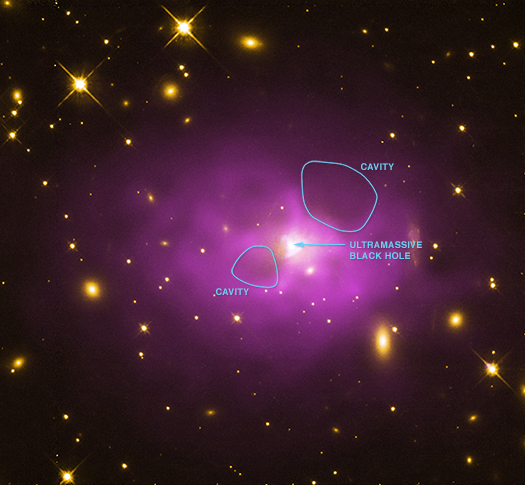Some of the biggest black holes in the universe might actually be even bigger than previously thought.
A survey of 18 giant black holes shows that at least ten may weigh between 10 and 40 billion times the mass of the sun. Astronomers have dubbed these “ultramassive” black holes.

This new analysis has looked at the brightest galaxies in a sample of 18 galaxy clusters, to target the largest black holes. The work suggests that at least ten of the galaxies contain an ultramassive black hole, weighing between 10 and 40 billion times the mass of the sun. Astronomers refer to black holes of this size as “ultramassive” black holes and only know of a few confirmed examples.
Julie Hlavacek-Larrondo of Stanford University and formerly of Cambridge University in the UK is the study leader. She said:
Our results show that there may be many more ultramassive black holes in the universe than previously thought.
The researchers estimated the masses of the black holes in the sample by using an established relationship between masses of black holes, and the amount of X-rays and radio waves they generate. This relationship, called the fundamental plane of black hole activity, fits the data on black holes with masses ranging from 10 solar masses to a billion solar masses.
All of the potential ultramassive black holes found in this study lie in galaxies at the centers of massive galaxy clusters containing huge amounts of hot gas. Outbursts powered by the central black holes are needed to prevent this hot gas from cooling and forming enormous numbers of stars. To power the outbursts, the black holes must swallow large amounts of mass. Because the largest black holes can swallow the most mass and power the biggest outbursts, ultramassive black holes had already been predicted to exist, to explain some of the most powerful outbursts seen. The extreme environment experienced by these galaxies may explain why the standard relations for estimating black hole masses based on the properties of the host galaxy do not apply.
These results were published in the July 2012 issue of The Monthly Notices of the Royal Astronomical Society.











